
Do you want a special place to relax outside?
Japanese grass gardens are very beautiful and peaceful. They have tall grasses that sway gently in the wind and soft moss under your feet.
Imagine having a garden that makes you feel happy and calm.
You can look at 17 cool ideas to make your garden a special retreat.
This will help you create a quiet space to escape to and enjoy nature.
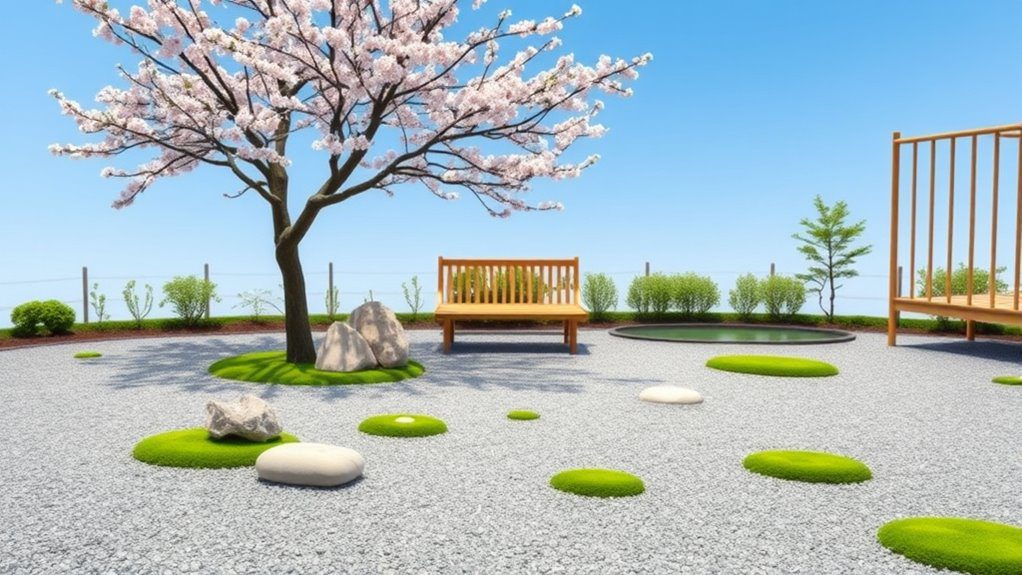
Zen gardens embody the principles of minimalism, emphasizing simplicity and tranquility. These gardens are characterized by raked gravel, strategically placed stones, and carefully curated plants, creating a serene environment for meditation and reflection. The absence of excessive ornamentation allows for a clearer mind, fostering mindfulness. Incorporating elements like bamboo fences or water features can enhance the peaceful ambiance, making your Zen garden a perfect retreat from the chaos of everyday life.

Transform your entryway into a tranquil haven by incorporating tall ornamental grasses. These graceful plants not only provide a sense of privacy but also add a soft, natural aesthetic. Choose varieties like miscanthus or pampas grass to create a welcoming, soothing atmosphere that sways gently in the breeze. Plant them strategically on either side of your path or entrance to draw attention and set a peaceful tone for your Japanese-inspired garden.
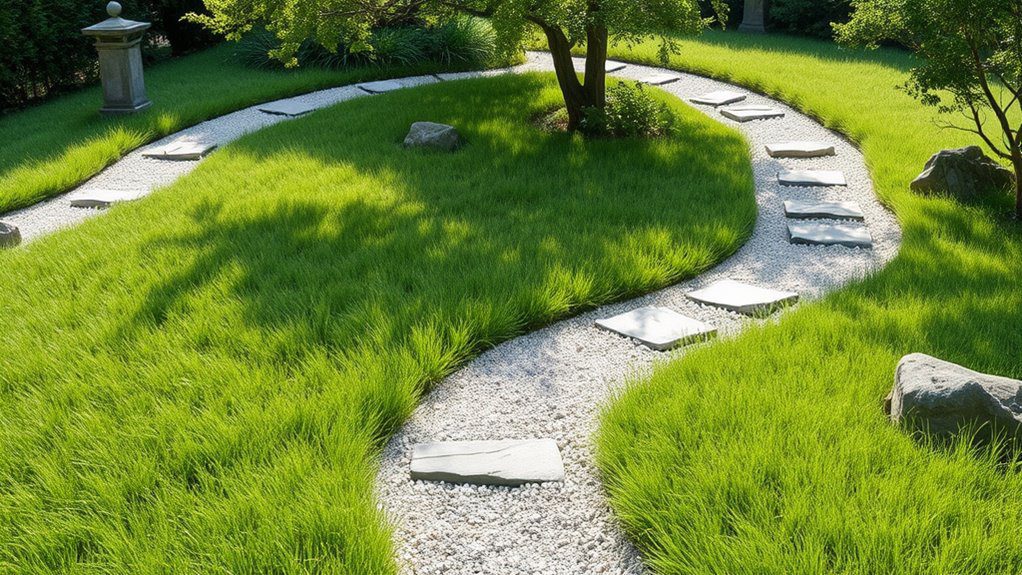
Incorporating gravel paths into your Japanese grass garden creates a tranquil walkway that enhances the serene atmosphere. The subtle crunch of gravel underfoot invites mindfulness as you stroll, encouraging connection with nature. Use larger stones as borders to define the paths, contrasting beautifully with the soft green grass. You can also incorporate stepping stones or pebbles, allowing for a harmonious blend of textures and colors, promoting a peaceful retreat within your garden oasis.
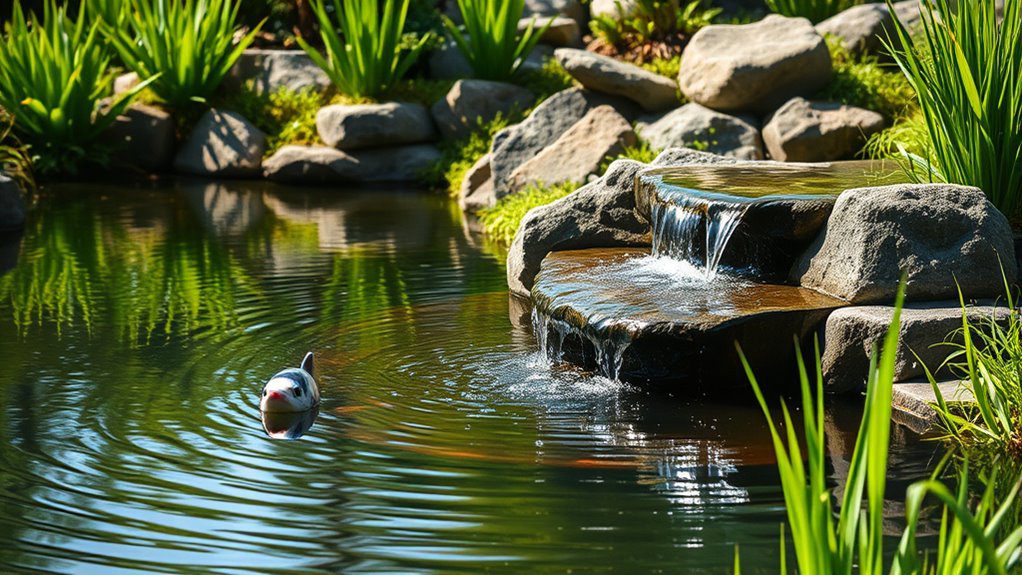
Incorporating water features into a Japanese grass garden creates a serene and tranquil atmosphere that resonates with nature. Consider adding a koi pond, a small waterfall, or a gentle stream to enhance the garden’s ambiance. The soothing sound of flowing water not only attracts wildlife but also promotes relaxation. Water features can be framed by lush grasses and strategically placed stones, blending harmoniously with traditional Japanese aesthetics while offering a peaceful retreat for contemplation and connection with nature.
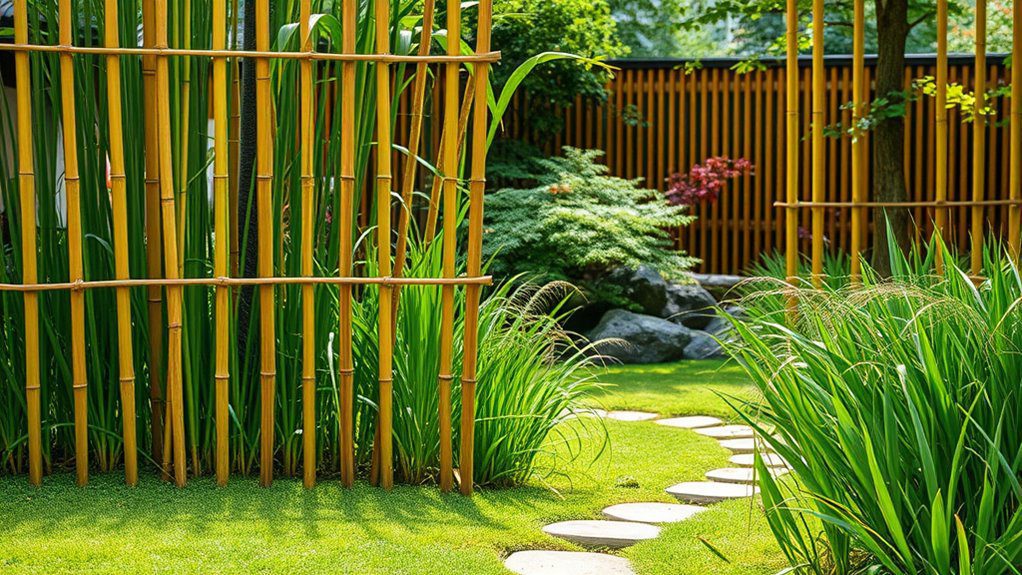
Bamboo fencing is an excellent choice for creating a natural boundary in your Japanese grass garden. Its aesthetic appeal complements the serene and minimalist design typical of Japanese landscapes. This sustainable material offers privacy without obstructing the natural light and can blend seamlessly with surrounding plants. Additionally, bamboo fencing allows for easy installation and maintenance, making it an ideal choice for gardeners looking to enhance their outdoor space while embracing eco-friendly practices.
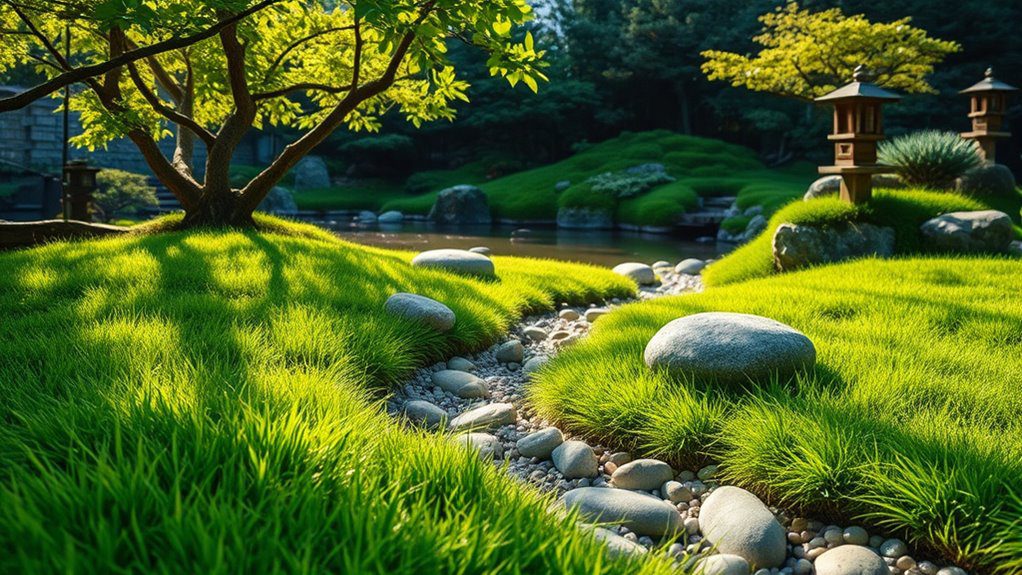
Combining grass with rocks creates a striking visual contrast in a Japanese garden, evoking a natural and serene atmosphere. The soft, lush green of the grass beautifully offsets the rugged textures and colors of stones and pebbles. This combination not only enhances the aesthetics of the landscape but also symbolizes harmony between nature’s elements. Incorporating various sizes and shapes of rocks can further diversify the design, allowing for creative patterns and pathways that invite exploration.
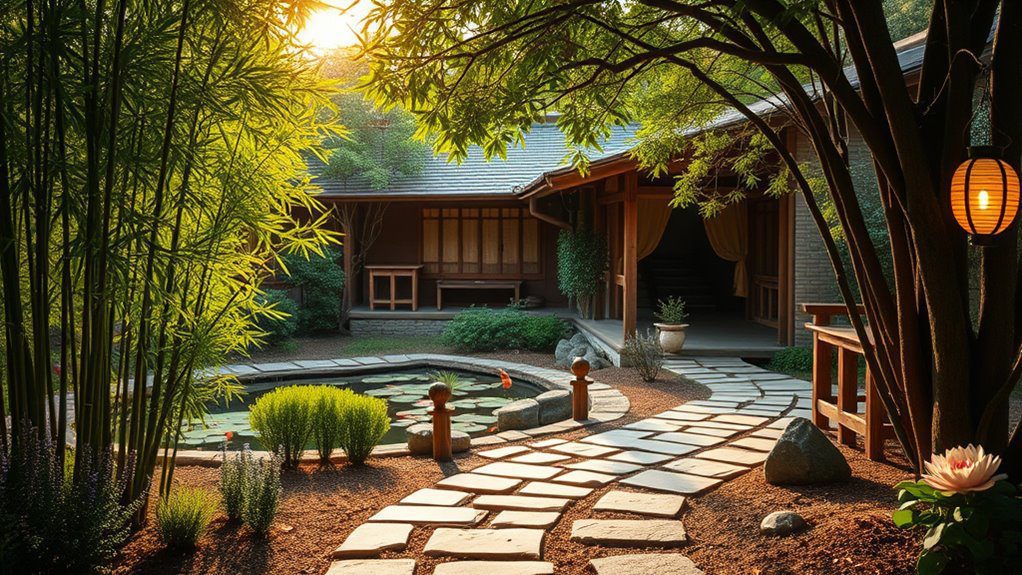
Designing a tea garden for relaxation involves creating a serene space that invites tranquility and mindfulness. Start with a winding path of stepping stones leading to a secluded nook, surrounded by lush greenery and gently swaying bamboo. Incorporate a small pond with koi fish and lily pads to enhance the peaceful atmosphere. Add a traditional tea house or gazebo with comfortable seating, allowing you to enjoy the beauty of nature while sipping tea. Subtle lighting and fragrant plants complete this harmonious retreat.

Adding seasonal flowering grasses to your Japanese grass garden can infuse vibrant colors and textures throughout the year. Consider incorporating species like Miscanthus, which blooms with soft plumes in late summer, or ornamental varieties of Pennisetum that offer eye-catching tassels. These grasses not only enhance visual appeal but also provide movement and sound as they sway with the breeze. Strategically placing them around pathways or water features can create a serene and dynamic atmosphere, celebrating the beauty of nature in every season.
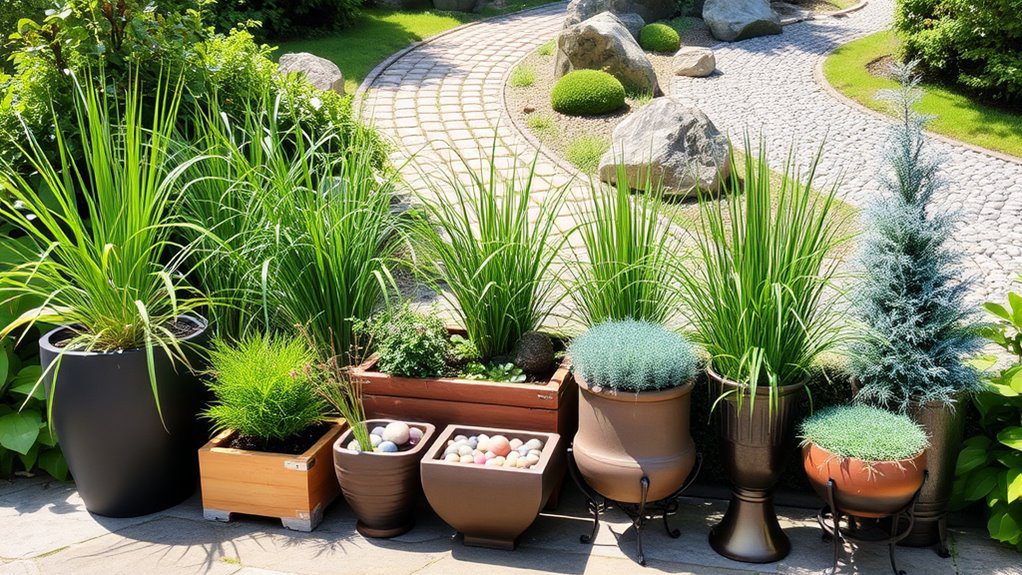
Utilizing container gardens in a Japanese grass garden allows for remarkable flexibility and creativity. These containers can house a variety of grasses, such as Japanese forest grass or bamboo, creating a serene focal point or enhancing garden boundaries. They can be easily rearranged or relocated to suit seasonal changes and personal preferences. Additionally, different heights and textures can be achieved using various container sizes, contributing to the layered, tranquil aesthetic typical of Japanese garden design.

Creating a meditation area surrounded by lush grass can enhance tranquility and mindfulness in your Japanese garden. Choose a quiet corner and lay down a soft, natural grass carpet to encourage bare feet and a connection to nature. Incorporate smooth stones or pebbles to define the space and add an element of Zen. A simple bench or meditation cushion can provide comfort, while strategically placed plants or bamboo can enhance privacy and create a serene atmosphere for reflection and relaxation.
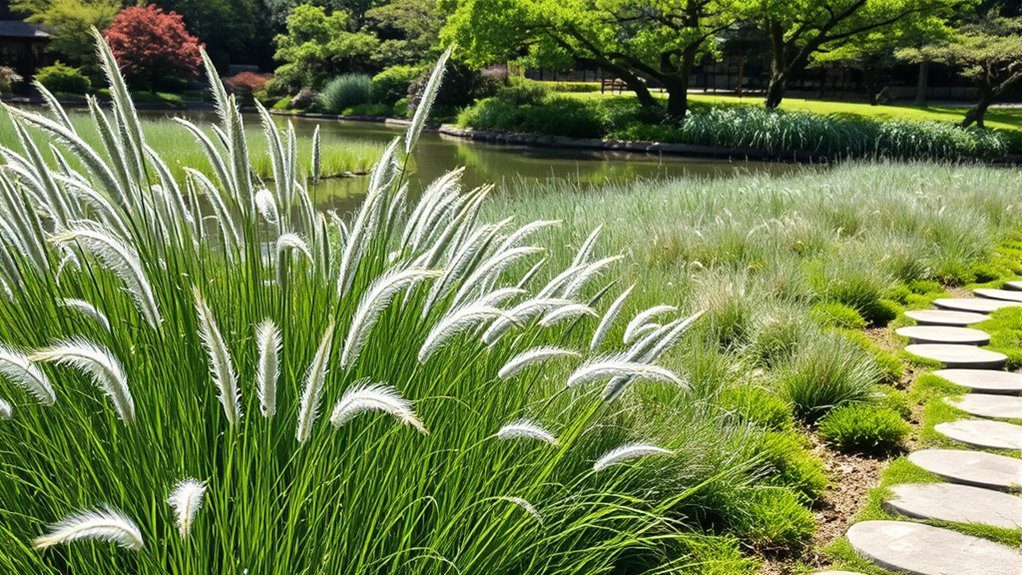
Incorporating native grasses into your Japanese grass garden not only enhances its aesthetic appeal but also promotes sustainability. Native grasses are adapted to local climates and soil types, requiring less water and maintenance. They provide habitats for local wildlife and contribute to biodiversity. By choosing native species like blue grama or switchgrass, you can create a serene and harmonious landscape that is both environmentally friendly and true to the principles of traditional Japanese gardens.
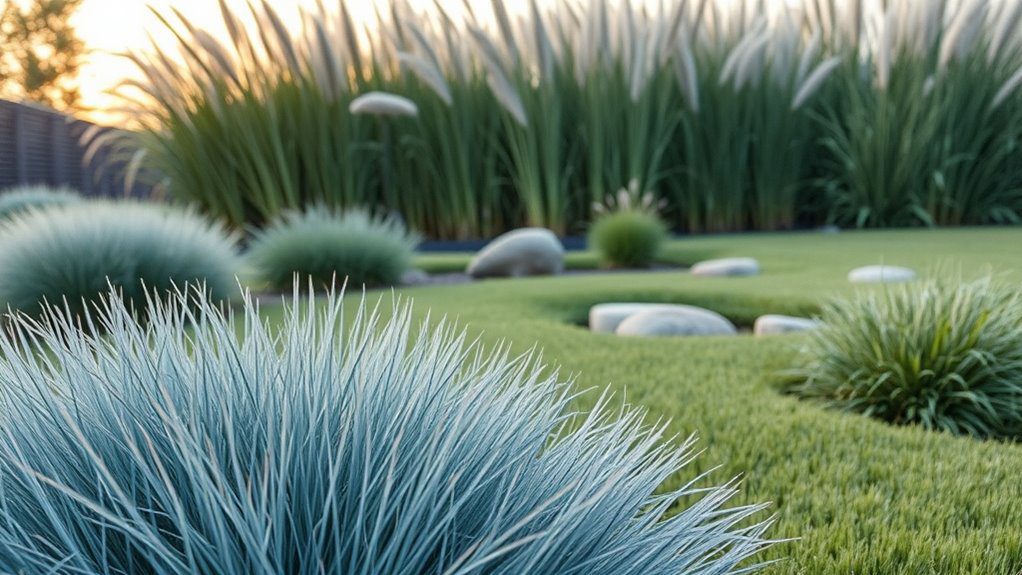
Creating layers with varied grass heights is essential in designing a Japanese grass garden that exudes tranquility and depth. Incorporate different species of grasses, such as tall miscanthus or fescue, intermixed with shorter varieties like blue fescue. This variation adds visual interest and movement while mimicking the natural landscape. Arrange these grasses in clusters to create a sense of flow, guiding the eye through the garden and enhancing the overall aesthetic harmony typical of Japanese design.
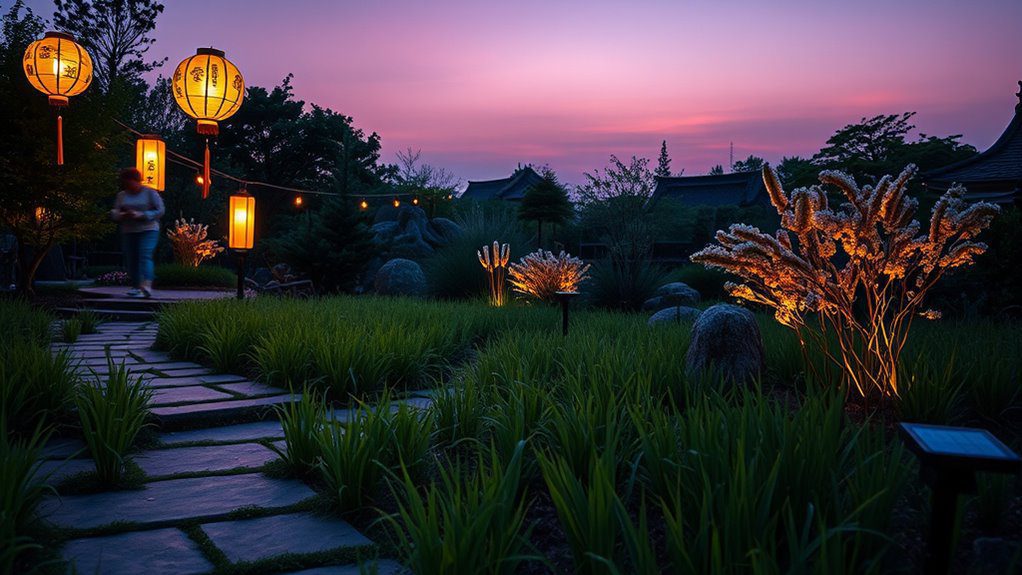
Soft lighting plays an essential role in enhancing the serene ambiance of a Japanese grass garden in the evening. Use lanterns, string lights, or solar-powered fixtures to create a warm and inviting atmosphere. Position lights strategically among the plants and paths to highlight the garden’s natural beauty while casting gentle shadows. This subtle illumination not only emphasizes the textures and colors of the grass but also invites relaxation and quiet contemplation, mirroring the tranquility of traditional Japanese aesthetics.
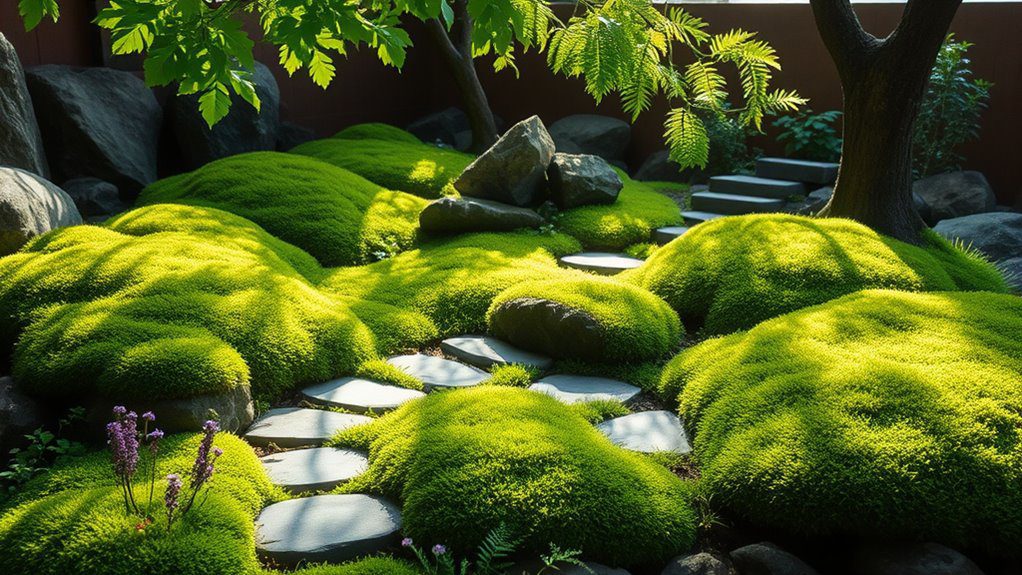
Creating a moss garden can transform your outdoor space into a tranquil oasis. Start by selecting a shaded area and clearing away any debris. Choose a variety of mosses that thrive in moist conditions, such as sheet moss or cushion moss, to achieve a lush appearance. Incorporate rocks, stones, or logs for added texture and visual interest. Water regularly to maintain humidity, and allow the natural greenery to inspire a calming atmosphere, reminiscent of serene Japanese landscapes.
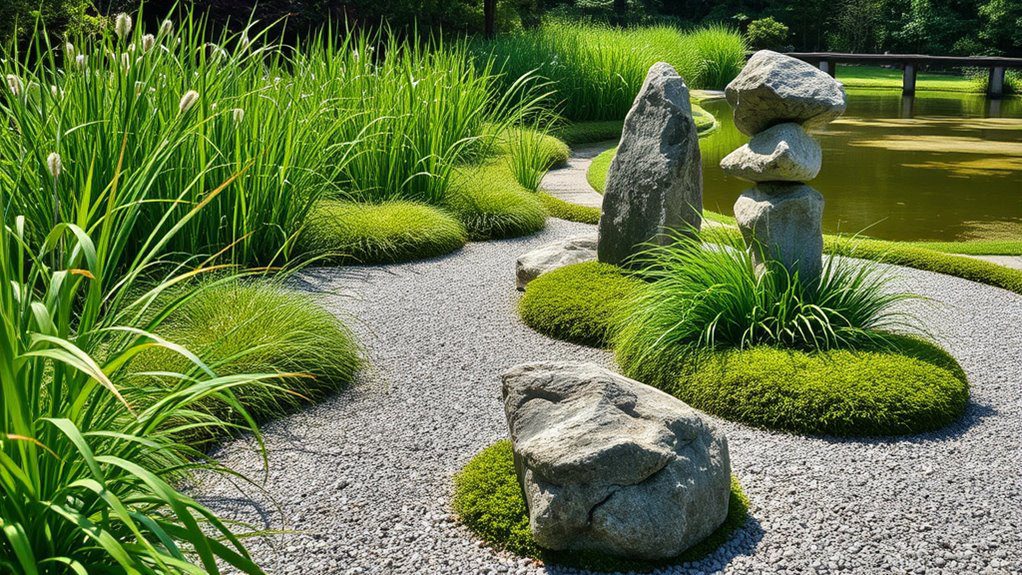
When designing a Japanese grass garden, experimenting with different textures and shapes can create a serene and dynamic landscape. Incorporate fine-bladed grasses alongside broader-leaved varieties to introduce contrast and visual interest. Use curved lines to mimic natural forms, guiding the eye through the garden. Consider adding ornamental stones or gravel paths to enhance the layout, allowing the interplay of shapes to evoke tranquility and harmony, essential elements in Japanese garden aesthetics.
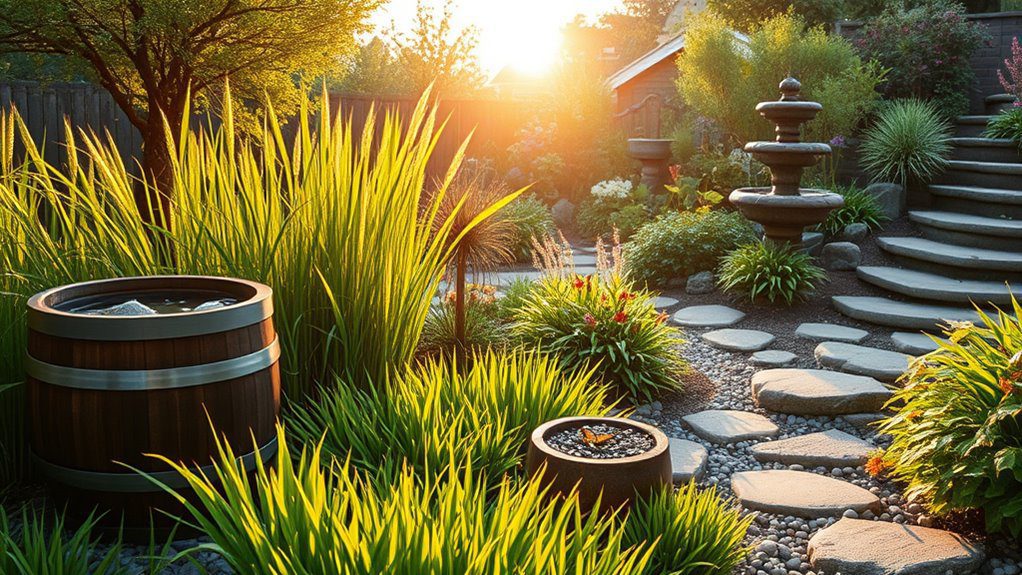
Implementing sustainable practices in your Japanese grass garden enhances both its beauty and environmental health. Start by using native plants that require less water and maintenance, and incorporate organic fertilizers to nourish your soil naturally. Rainwater harvesting can also be effective for irrigation, minimizing waste. Consider creating a compost area for organic waste, and encourage biodiversity by attracting beneficial insects and pollinators to your garden, fostering a vibrant ecosystem.
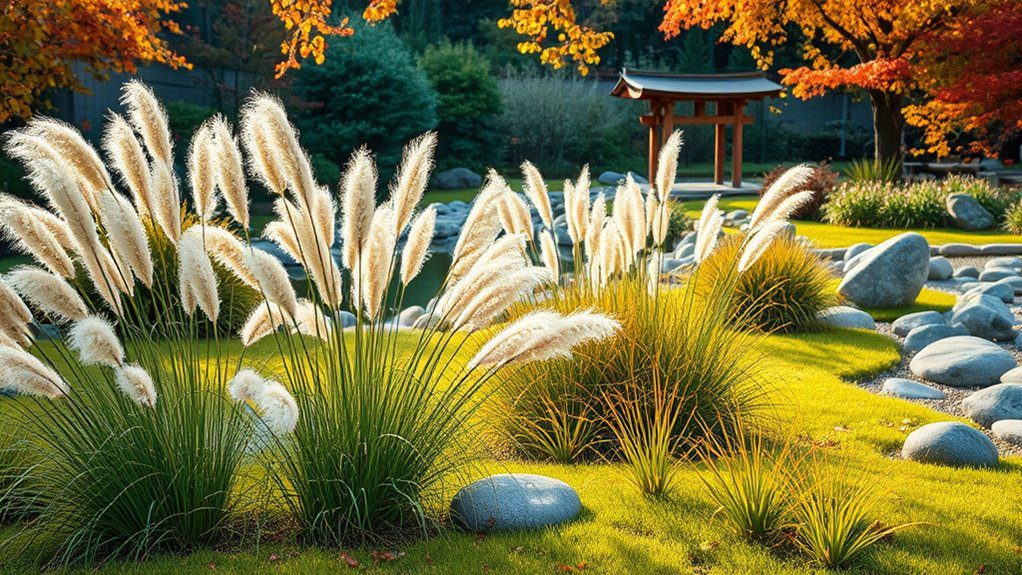
Curating a Japanese grass garden for seasonal changes allows you to experience the beauty of nature’s cycles throughout the year. Incorporate plant varieties like Japanese sedge and fountain grass, which provide texture and movement. Consider the color palette by selecting foliage that shifts from vibrant greens in spring to warm hues in autumn. Introduce ornamental elements like stones and water features that reflect seasonal transformations, creating a tranquil space that harmonizes with shifting landscapes.
As you transform your outdoor space with these 17 Japanese grass garden ideas, you’re not just creating a landscape—you’re cultivating a sanctuary for the soul. Imagine stepping into this serene retreat, where each element invites peace and reflection. Can you hear the gentle rustle of grasses and the soft trickle of water? Every choice you make deepens your connection with nature, promising not just beauty, but a tranquil escape. What will your garden reveal about you?

Don't let aphids, slugs, and caterpillars ruin another plant. Take back control with simple, natural methods that actually work.